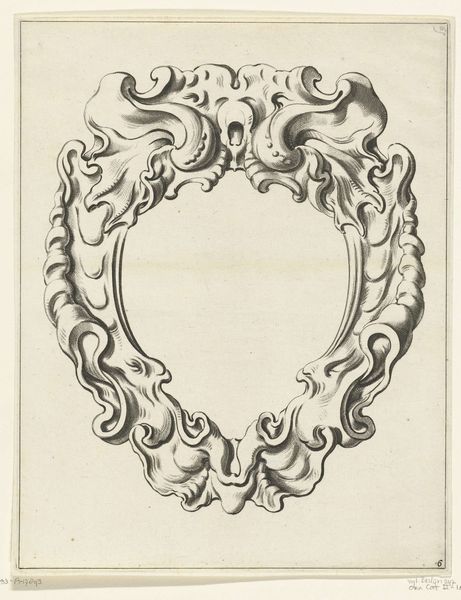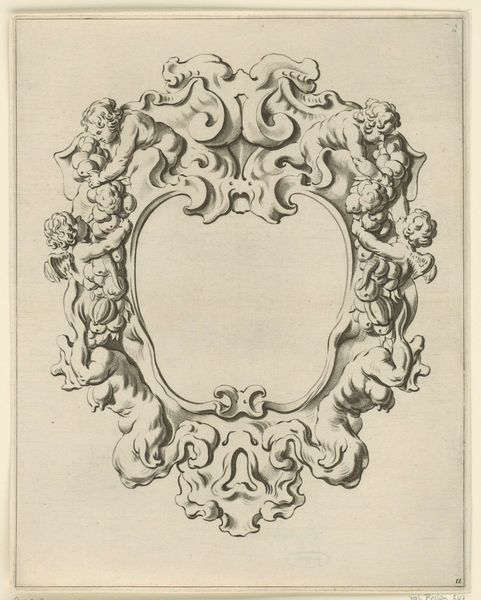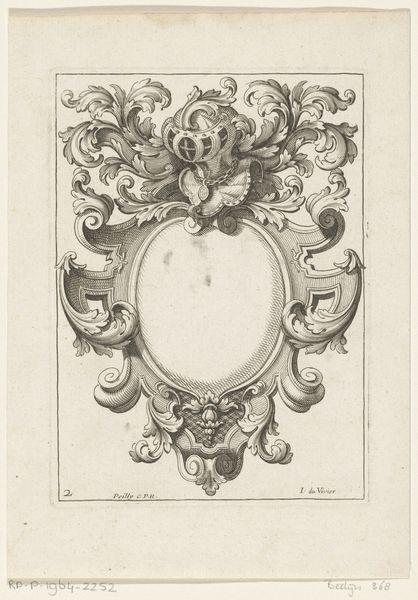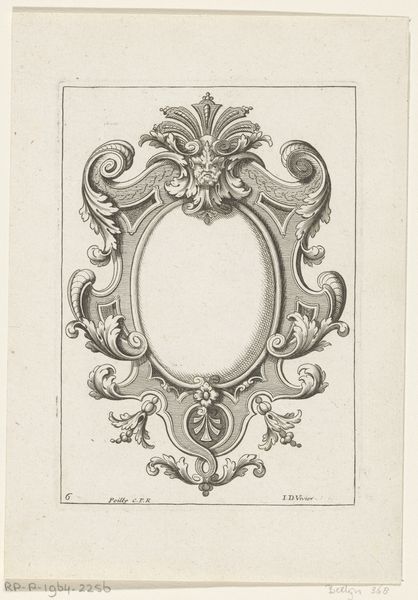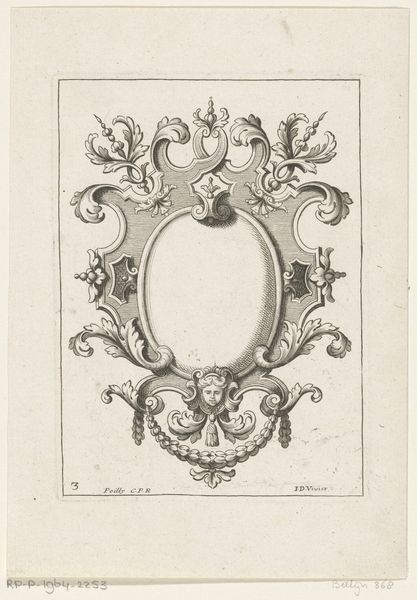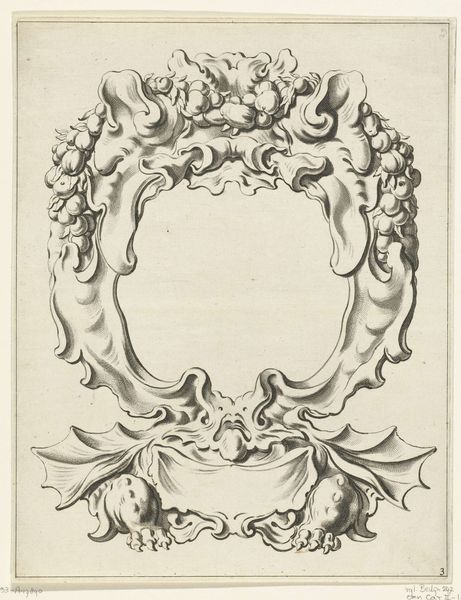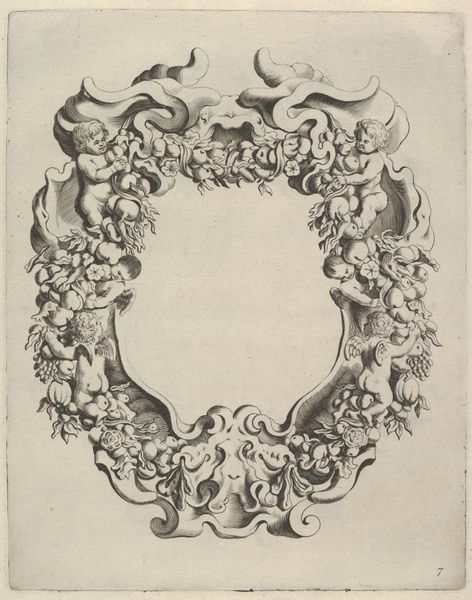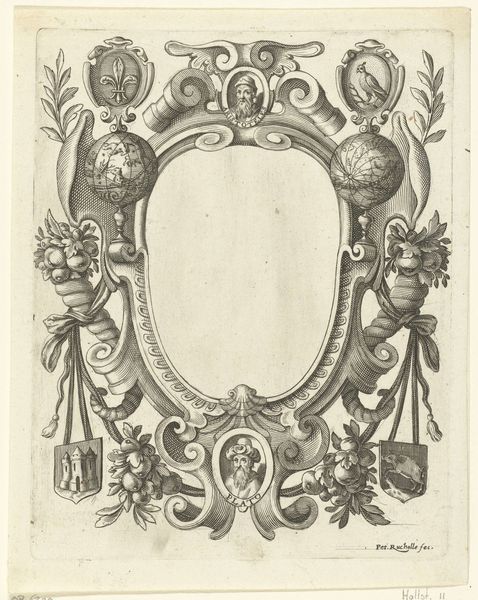
drawing, ornament, print, etching, ink
#
drawing
#
ornament
#
baroque
#
pen drawing
# print
#
etching
#
form
#
ink
#
geometric
#
line
#
history-painting
#
decorative-art
Dimensions: height 253 mm, width 197 mm
Copyright: Rijks Museum: Open Domain
Pieter Hendricksz. Schut made this cartouche with ‘kwabornament’ – that is, lobe ornament – and garlands sometime in the mid-17th century using etching. This is an early printmaking process, where the artist covers a metal plate with a waxy ground, draws through it with a needle, and then bathes the plate in acid. The acid bites into the exposed lines, which are then inked and printed. The real subject here is the graphic potential of line, with its capacity to evoke three-dimensional form. Look closely, and you’ll see how Schut varied the density of marks to suggest deep relief. This was a period when ornament, though entirely abstract, was regarded as fundamental to architecture and design, and prints like this would have been acquired as source material. Etching allowed for the relatively quick and precise reproduction of elaborate designs, contributing to a broader culture of luxury and refinement. It is an intimate medium, requiring control and finesse. The very opposite of industrial production, yet crucial to its development.
Comments
No comments
Be the first to comment and join the conversation on the ultimate creative platform.

